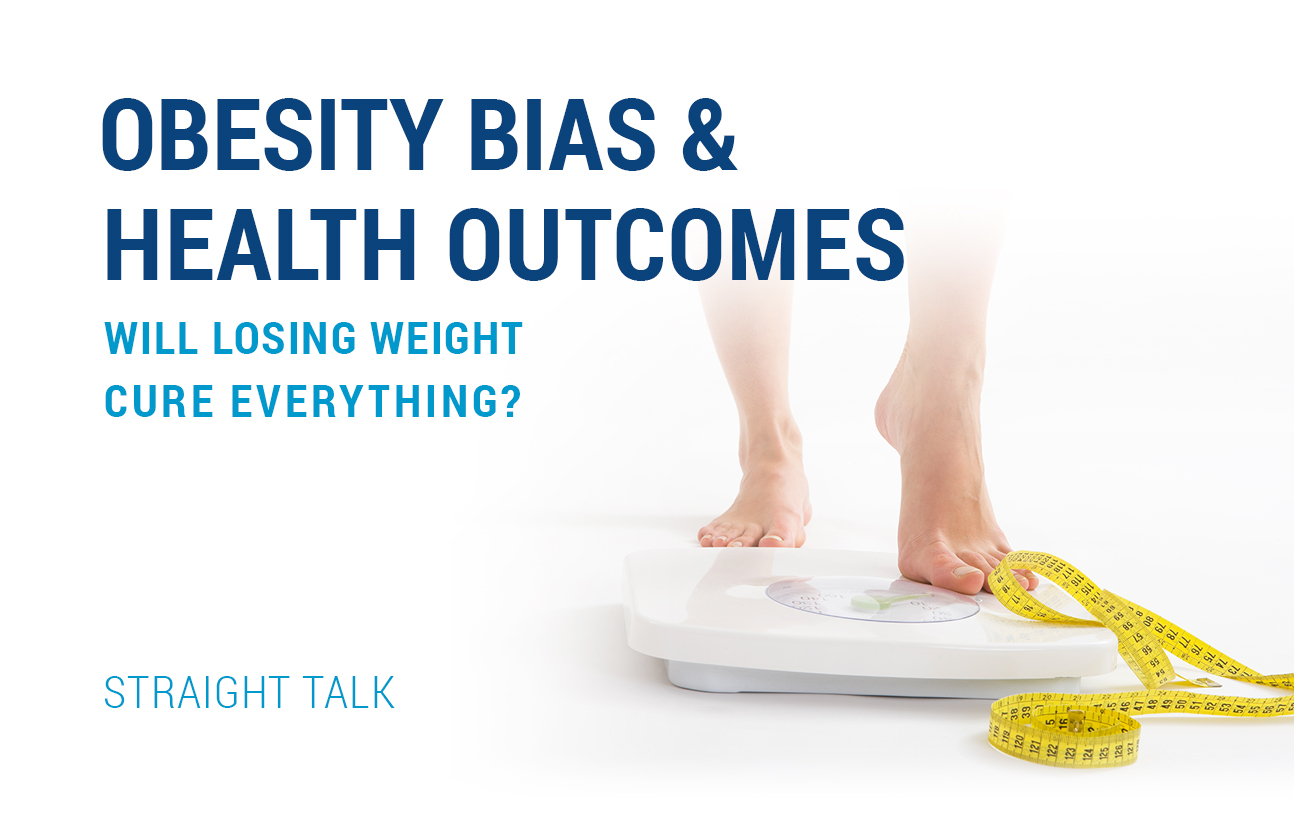One thing I’ve learned after 55 years on this planet is that we all walk around every day with biases that color our decision making. Some of these biases can be safety-related (“I really don’t want that wild snake in my home, even though I can’t tell a poisonous one from a safe one!”) or designed to support sensible decision making (“I probably won’t give Jim any more work, since he keeps getting caught stealing from the company!”) or even beneficial to society (“Sure, I could dump these excess chemicals into that river with no idea what impact they would have on the environment, but it just feels wrong!”).
Our biases come from a variety of sources. Some are imprinted at home, some at school, some at work, some through media exposure and some we just stumble upon ourselves, but in every case, they cause us to short-circuit our normal evaluation and decision making process and sort-of jump to an established conclusion in our mind.
As a society, we are striving to identify biases we would consider harmful. Certainly, many of us are working hard to eliminate biases based on the federally protected classes of race, national origin, color, disability, age, and sex. But sadly, there are still harmful biases out there, and when they start interfering with a whole class of people getting proper medical treatment, we are right to be alarmed.
Who is the abused class I’m talking about? Overweight folks. Obesity is more prevalent in our population than ever, and the obese are having a harder and harder time accessing life, let alone appropriate medical care.
I’ve shared before with you all my struggles as an overweight child and adult. Let me tell you about some of the times when I feel like life is biased against me.
I fly quite a bit for work. The “official” size of a typical airline seat is 17 inches from mid-armrest to mid-armrest and is designed for a person up to a body mass index (BMI) of 30 to ride comfortably. I’m a 35, so woe betide the person who is assigned to sit next to me, because I am either spilling over onto her seat or into the aisle, where I get to meet up with the drink carts way too often. From shoulder to shoulder, I’m around 21 inches wide. There are huge discussions about the “lack of leg room” on airline seats and the solutions for the over-tall. Nothing doing for the “over-wide,” I’m afraid. I’ve even been told to “buy another seat” if I don’t like it. Since one-third of Americans are now classified as “over-wide,” why aren’t the airlines doing more to accommodate them? And are they miserable when they do fly?
I’ve been buying clothes from a particular large-box clothing retailer for many years and have been very happy with their sizes and selections. Recently I went over and I noticed every suit and pair of dress pants now cut off about four inches below my normal size. When I asked about that, I was told that the store was trying to “take their image upscale” and they couldn’t do that with larger sizes on the racks. Apparently “over-wide” is a fashion faux pas as well.
How about medical care? You would think if anybody would understand the need to help large people, it would be docs, clinics and hospitals. Not so fast, I’m afraid.
A few years ago, I was in a car accident and got a pretty bad concussion. An MRI was ordered and I can tell you the “tunnel” was not designed for anyone who wears a 52 regular suit jacket! I was panicky and claustrophobic and the 20-minute scan felt like a week! My shoulders were screaming by the time they let me out. Afterward, I found out they had an “open” MRI machine that wasn’t a tunnel at all, but typically you have to beg to use it because facilities charge extra for the “open” MRI. Starting to sound like a bias?
At my primary care doctor’s office the other day (he’s a gem; really treats me very well), I noticed a very large woman going in, and the nurse did not ask her to step on the scale, as she did every other patient. When my turn came, I checked, and, sure enough, the scale topped out at 300 pounds. When I asked, they said “We just take the patient’s word for it if they weigh more than that.” HOW is the patient weighing themselves if their doctor’s scale won’t do it? And how much would a larger scale really set them back? (Not much, according to a quick Amazon search.)
Recently, an article in The New York Times took a deep dive into obesity bias in healthcare, and the data they uncovered was quite disturbing. The findings can be divided into several major areas:
Drug dosing — Even when doctors want to prescribe drugs for obese patients, dosing tables are often calibrated based on the “average” weight patient and are 20 or 30 years old, when the “average” was much lower. This miscalculation can result in annoyance (too little antibiotic to fight off an ear infection) or outright life-threatening mistakes (under-dosing chemotherapy drugs). There are ZERO requirements on drug makers or anesthesia dispensers to provide dosing instructions for large patients. About 20 to 30% of all surgical patients who end up in Intensive Care get there because of inappropriate dosing of anesthesia based on their weight.
Physician/Triage Bias — An increasing number of doctors, when confronted with a very obese patient, fall victim to a bias that tells them the patient’s weight is the cause for all ailments. A symptom like “shortness of breath” can be a harbinger of many terrible health conditions. Recently, a female patient appeared in Dr. Scott Kahan’s office (an obesity specialist at Georgetown) who could barely breathe. Her personal doctor had told her shortness of breath was normal for someone her size, and sent her home with an order to “lose weight.” Kahan dug a bit deeper and found blood clots in her lungs, any of which could have ended her life.
But doctor #1 never got past how big she was and blamed the obesity without running a single test.
Patty Nece of Alexandria, Va., decided upon reaching a BMI in the high 40s to turn her life around. She had already lost 70 pounds when she got a stabbing pain in her hip. “Let me cut right to the chase, you need to lose weight!” a doctor told her. Without running a single test, he diagnosed her with “obesity pain.” The next doctor she sought did some X-rays and determined she actually had progressive scoliosis that had nothing to do with her obesity. But doctor #1 could not see past her weight.
Refusal to Treat Bias — Increasingly, stories are emerging of hospitals that refuse treatment to obese patients (worried about quality ratings falling because of complications or re-admissions). Other stories are told about hard and fast screenings that exclude patients above a certain weight from getting necessary surgeries, without real evidence of increased risk.
Dr. Adolph Yates, an orthopedic surgeon at the University of Pittsburgh School of Medicine, is studying obesity bias in knee and hip replacement surgeries as a start.
“There is a perception among surgeons that it is more difficult, and certainly some felt it was an added risk to operate on very obese people,” Dr. Yates said. He was a member of a committee that reviewed the risks and benefits of joint replacement in obese patients for the American Association of Hip and Knee Surgeons.
The group concluded that heavy patients should first be counseled to lose weight, but they should never be categorically dismissed if they don’t.
A recent survey of more than 700 hip and knee surgeons confirmed Dr. Yates’s impressions; 62 percent said they used BMI scores as cutoffs for requiring weight loss before offering surgery. But there was no consistency in the figures they picked.
“The numbers were all over the map,” Dr. Yates said. And 42 percent who picked a BMI cutoff said they had done so because they were worried about their performance score or that of their hospital, not patient outcomes.
“It’s very common to pick an arbitrary BMI number and say, ‘That is the number we won’t go above,’” Dr. Yates said. Yet a person with an index of, say, 41 might be healthy and active, he said, but in terrible pain from arthritis. A knee replacement could be life transforming and advance the person’s efforts to lose weight.
The real tragedy is that the way doctors treat large patients keeps them away from the doctor’s office completely – somewhere they desperately need to be. I can tell you that until I found my current primary care doctor, I avoided the doctor’s office like the plague, because every conversation ended up being about losing weight, and we never talked about my non-weight-related health issues. And telling me “Hey, fat boy, you need to drop 50 pounds!” was not helpful (yes, a doctor actually said that to me).
And it’s not just me. Laura Beck, a self-professed “fat vegan” who writes for Jezebel.com had some thoughts about her visits to the doctor. After being told “you can blame being overweight” for breaking her middle finger in a door, she took a deep dive into a Harvard study on bias, and it showed that the majority of doctors in the study despised working with overweight patients and found them “unattractive and difficult to work with.” Before they even met them?
Laura really nails it here: “Going to the doctor is pretty loaded for most people, and when you know that you’re going to be judged because of how you look, it can be extremely unpleasant. It’s why so many fat people just don’t go at all — which is a big problem because it allows minor health issues to escalate. What’s easily treatable one month, can become very dangerous the next.”
Amen. Let’s just all be aware of the fact that big people like me are well aware that they are large, and would really love to lose weight, but for a variety of reasons haven’t been able to get it done. We’re not trying to bother you or hurt you, so please keep that in mind before you let your biases against us run wild. And doctors, make sure you are looking past that “weight/height” computation and listening to your patients. Please!





Leave a Reply